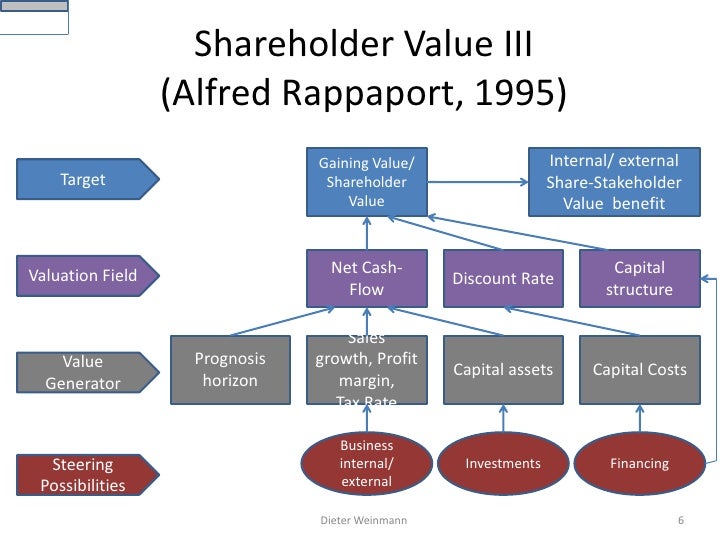Alfred Rappaport 7 Value Drivers

Executive Summary Reprint: R0609C Executives have developed tunnel vision in their pursuit of shareholder value, focusing on short-term performance at the expense of investing in long-term growth. It’s time to broaden that perspective and begin shaping business strategies in light of the competitive landscape, not the shareholder list. In this article, Alfred Rappaport offers ten basic principles to help executives create lasting shareholder value. Fizicheskaya i kolloidnaya himaya shpargalki. For starters, companies should not manage earnings or provide earnings guidance; those that fail to embrace this first principle of shareholder value will almost certainly be unable to follow the rest. Additionally, leaders should make strategic decisions and acquisitions and carry assets that maximize expected value, even if near-term earnings are negatively affected as a result. During times when there are no credible value-creating opportunities to invest in the business, companies should avoid using excess cash to make investments that look good on the surface but might end up destroying value, such as ill-advised, overpriced acquisitions.
Akhirnya cukup dengan beberapa klik saja teman-teman mempublikasikan diagram tersebut ke share point dan memberikan akses kepada orang lain di Web, bahkan untuk orang yang tidak mempunyai Microsoft Visio 2010 sekalipun. Teman-teman akan melihat secara langsung bentuk visualisasi dari data tersebut dalam bentuk ikon, gambar, simbol, grafik, dan warna.  Microsoft Visio 2010 ini dapat membantu teman-teman untuk membangun diagram yang kompleks sekalipun dengan profesional dan menghubungkannya dengan sumber data yang populer seperti Excel. Microsoft Visio 2010 adalah sebuah aplikasi untuk membuat berbagai diagram dengan mudah.
Microsoft Visio 2010 ini dapat membantu teman-teman untuk membangun diagram yang kompleks sekalipun dengan profesional dan menghubungkannya dengan sumber data yang populer seperti Excel. Microsoft Visio 2010 adalah sebuah aplikasi untuk membuat berbagai diagram dengan mudah.
Expectations Investing – Michael Mauboussin And Alfred Rappaport: Review And Summary. The author’s detail the relationship between value drivers, (influenced. Shareholder value is a business term, sometimes phrased as shareholder value maximization or as the shareholder value model, which implies that the ultimate measure of a company's success is the extent to which it enriches shareholders.
It would be better to return the cash to shareholders in the form of dividends and buybacks. Rappaport also offers guidelines for establishing effective pay incentives at every level of management; emphasizes that senior executives need to lay their wealth on the line just as shareholders do; and urges companies to embrace full disclosure, an antidote to short-term earnings obsession that serves to lessen investor uncertainty, which could reduce the cost of capital and increase the share price.
The author notes that a few types of companies—high-tech start-ups, for example, and severely capital-constrained organizations—cannot afford to ignore market pressures for short-term performance. Most companies with a sound, well-executed business model, however, could better realize their potential for creating shareholder value by adopting the ten principles. Many firms sacrifice sustained growth for short-term financial gain. For example, a whopping 80% of executives would intentionally limit critical R&D spending just to meet quarterly earnings benchmarks.
They miss opportunities to create enduring value for their companies and their shareholders. How to cultivate the future growth your firm needs to succeed? Rappaport identifies 10 powerful practices. First among them: Don’t get sucked into the short-term earnings-expectation game—it only tempts you to forgo value-creating investments to report rosy earnings now. Another practice: Ensure that executives bear the same risks of ownership that shareholders do—by requiring them to own stock in the firm. At eBay, for example, executives have to own company shares equivalent to three times their annual base salary.